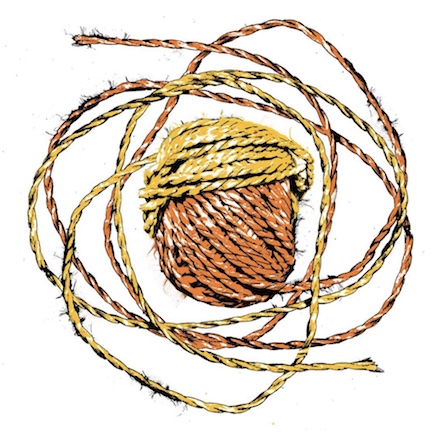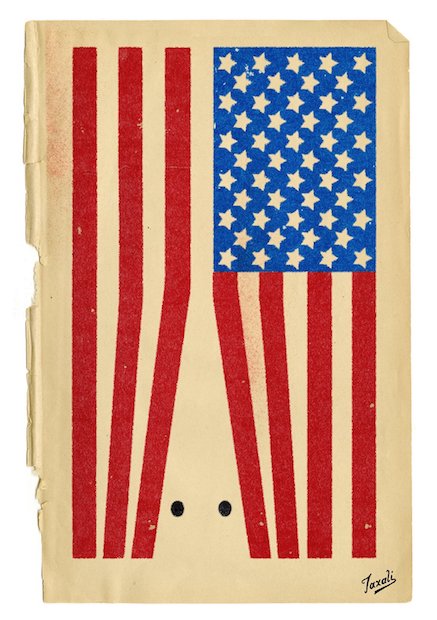13 May 2020
24 September 2019
28 July 2019
30 March 2019
A cold (yet productive) winter…
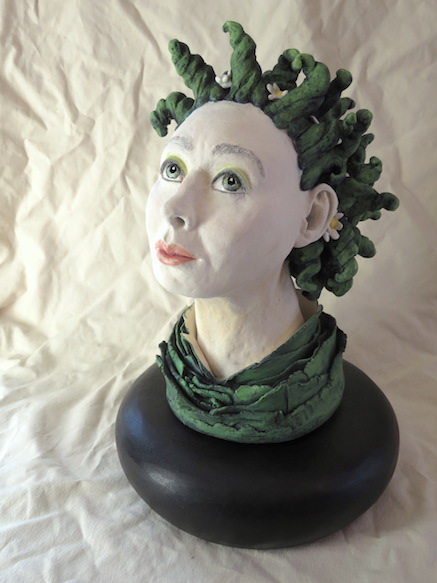
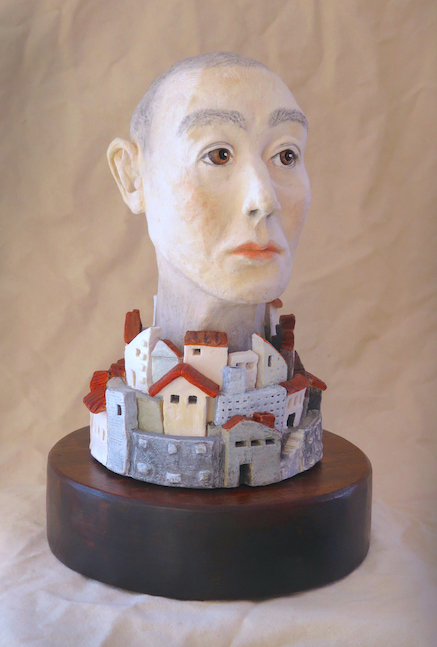


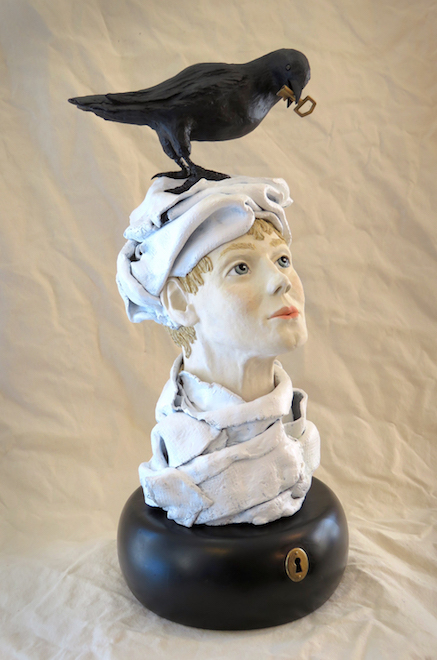
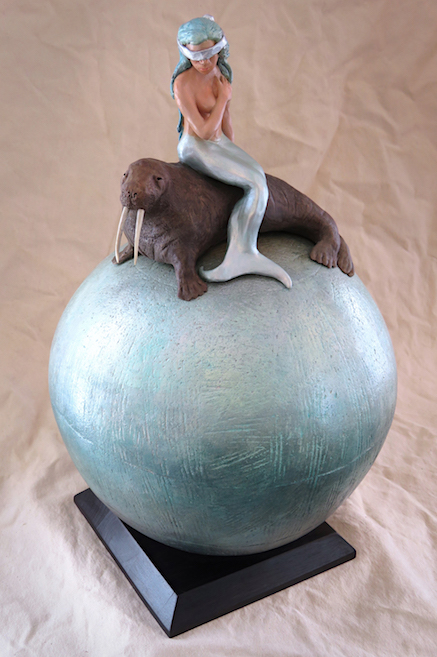
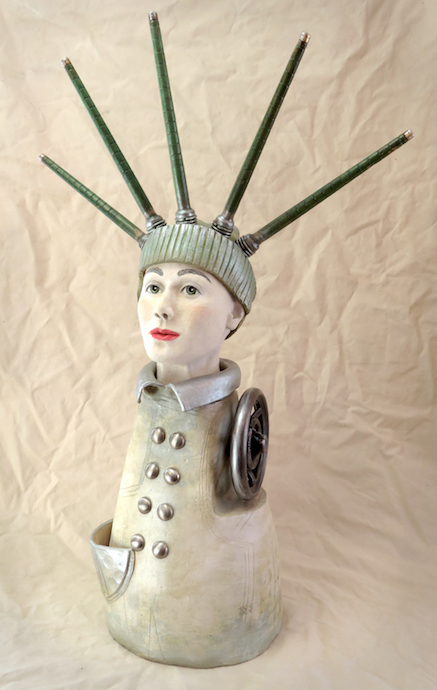
Winnipeg Beach, Manitoba
As had been predicted by some weather prognosticators, the past four months have proved to be an exceptionally cold, harsh winter. At Christmas, Ev and I discussed how to make the best of this challenge — and a decision to focus on creating new work in her ceramic/sculpture studio ‘What? Clay Art & Curios’ offered the solution. (The door to the studio is less than 20 meters from the front door of the house, so, no worries about debilitating wind-chills…).
Ev and I collaborate on many of her pieces, with me acting as studio assistant — my background in painting and illustration is put to use (e.g. on cold-finishes) and I particularly enjoy the aspect of multi-media assemblage (combining and joining diverse materials in innovative ways), up-cycling antique and “scrap” elements, and mounting her sculptures to bases, etc. We have a lot of fun together.
Shown above is a sampling of the pieces created in Ev’s studio so far this year (some have sold, some are in galleries) — more complete postings on these pieces (including titles, dimensions, technical descriptions, and “artist’s statements)” can be viewed on her website here.
9 February 2019
RIP… Tomi Ungerer (1931-2019)
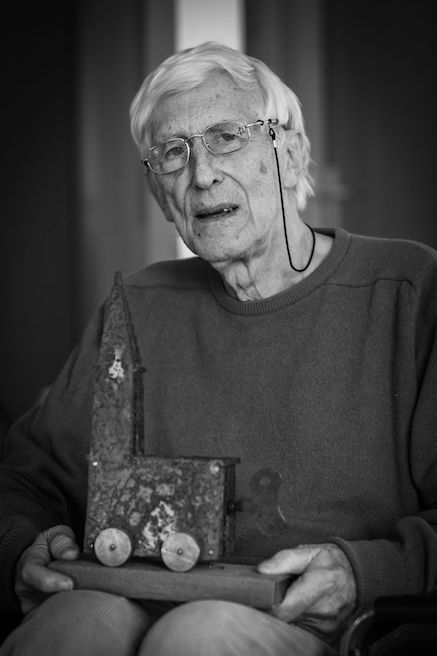
Cork, Ireland
Tomi died peacefully in his sleep with a book beside him. He recently began working on a new collection of short stories and he has two major exhibitions opening in Paris this Spring. Tomi’s imagination never slept. Read more…
A polymath and a provocateur, Tomi Ungerer is perhaps best described by his motto: ‘Expect the Unexpected’.
His life and work defied easy categorization. Although best known as an author and illustrator of children’s books, Tomi Ungerer’s oeuvre encompassed diverse practices including illustration, advertising, writing, collage, sculpture and architectural design. From the beginning of his career in the 1950s to the present day, Ungerer’s work challenged social norms and conventions with breath-taking originality.
Born in Strasbourg in 1931, Ungerer worked in New York, Canada and Ireland as well as his place of birth. He has published over 140 books which have been translated into 28 different languages, ranging from his acclaimed children’s stories to autobiographical accounts to controversial volumes of social satire and adult themes.
Ungerer’s illustrative style is celebrated for its minimal dexterity, darkly comic wit and dazzling inventiveness. Renowned for his iconic advertising campaigns and his contentious political posters that railed against the Vietnam War and racial injustice in the 1960s, Ungerer’s frequently subversive work provides invaluable commentary on the divisive socio-political events of the second half of the twentieth century. Ungerer’s work continues to be politically-charged and he has been involved in numerous humanitarian campaigns for nuclear disarmament, Amnesty International, Reporters without Borders and more recently, European integration.
(from Tomi Ungerer’s official website) Learn more here…
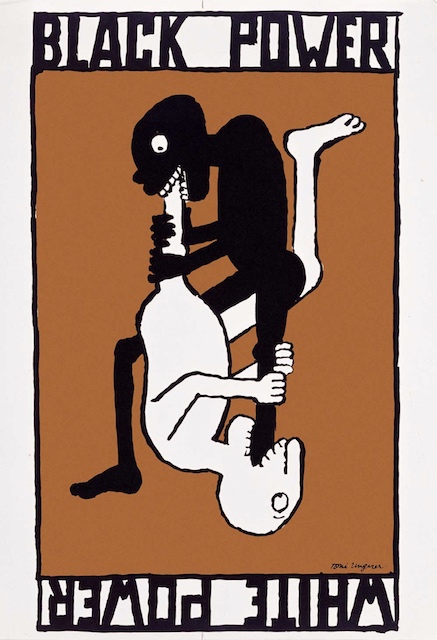
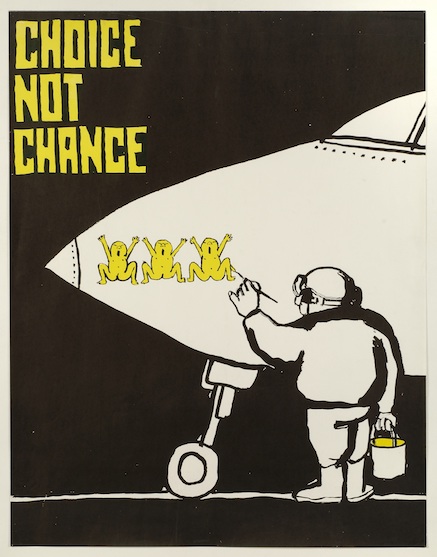
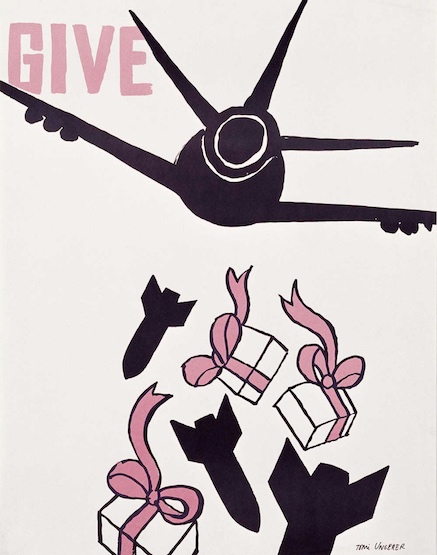
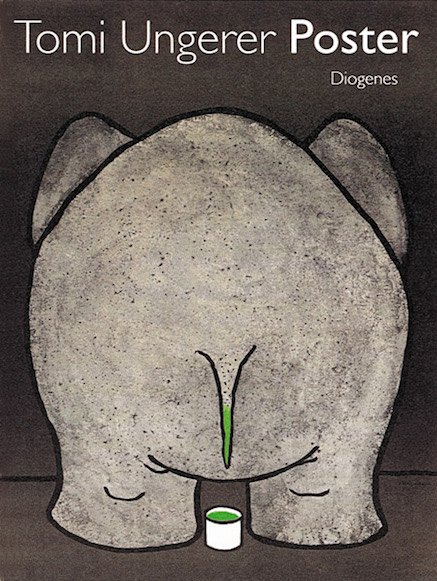
“Posters for me are the most challenging and gratifying exercise. A poster has to act by impact, to catch the eye of a passerby within a few seconds. I would say the poster is more of an art form than most other kinds of advertising.
In the 1960’s I started to make political posters. Two subjects sparked my revulsion and my anger: racial segregation and the War on Vietnam. Later I did posters for other causes such as Amnesty International, liberty of the press, animal rights, ecology, nuclear disarmament and so on.” —Tomi
2 January 2019
2019… and high time for unisex toilets.




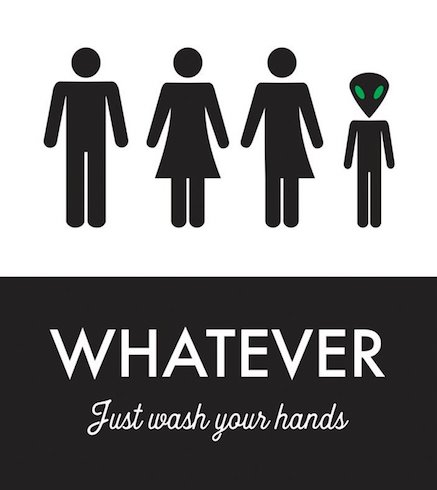
Worldwide
Come on, People! It’s high time for unisex public toilets (aka all-gender toilets, gender neutral toilets, gender free toilets or all-user toilets). These are all toilets which can be used by anybody, regardless of gender identity or presentation.
Public toilets and sanitation facilities need to cater for all people, including those who are part of the LGBTI community. This is an issue with respect to the human right to water and sanitation and also from the perspective of the Sustainable Development Goal 6 (of the United Nations), which aim for universal access to sanitation and gender equality. Simply put, unisex public toilets provide equal sanitation space for all genders.
Gender segregated public toilets are an outmoded vestige of the Victorian era (200 years ago) where women’s modesty and safety were considered at risk and under constant need of surveillance and discipline. Before that (prudish) time, public lavatories around the world offered room for both sexes.
During the past two centuries public toilets around the world have been frequently been segregated by race, class, religion, and gender — and have often been completely inaccessible to certain people with unique needs or disabilities. Making public facilities universally accessible, and to diverse populations, has long been an issue on our “shrinking planet” — it’s high time for change!
More on the topic here. Images from diverse online sources…
Please treat all others as equals, and please do wash your hands.
22 December 2018
Portraits of the North… on Facebook
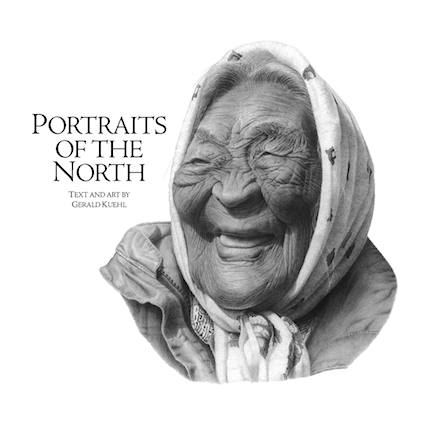
Winnipeg, Canada
A year ago today, I created a Facebook “page” for good friend Gerald Kuehl, helping to promote his book Portraits of the North, and thereby further disseminating the compelling “stories” that Ger has been entrusted to pass on by his subjects.
I’m happy to share that, according to Facebook’s traffic reports, in the past 12 months over 300,000 have had posts from the FB page enter their screen (“post reach” or visibility, in FB metrics-speak) — an average of (+/-) 6000 people per week along with (+/-) 1000 “post engagements” (the number of people who have engaged with the weekly posts through “likes, comments, shares and more).”
It’s really encouraging to see these moving, engaging pencil portraits of First Nations and Métis elders — “the last generation born on the land” as they have been described, with each having been drawn painstakingly with love, respect, and intention — being shared and appreciated so widely. Huge thanks (!) are due to the family, friends, relations, supporters, and community members of the individuals portrayed… please keep sharing the legacies!
Miigwetch. Ekosani. Masi Cho. Wopida. Ayhay. Merci. Thank you!
Link to the Facebook page for Portraits of the North here. Buy the book at your local booksellers’ or here. I’ve blogged about Gerald Kuehl’s incredible work previously, here and here.
10 December 2018
Today is Human Rights Day… and also the 70th anniversary of the Universal Declaration of Human Rights.
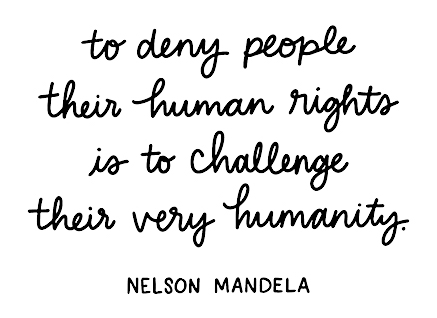
Paris, France
70 years ago today, on 10 December 1948, the Universal Declaration of Human Rights was adopted by the United Nations General Assembly at Palais de Chaillot, Paris. The Declaration arose directly from the experience of the Second World War and represents the first global expression of rights to which all human beings are inherently entitled. The date of 10 December was established as Human Rights Day in 1950, and has been commemorated annually around the world on this date ever since.
These days, the advancement and promotion of worldwide human rights are confronted by growing nationalism, a widespread misinformation epidemic, and the ascendency of identity politics which draw strength from ethnic or religious conflict. All the more reason to celebrate (and disseminate) comprehensive statements of inalienable human rights, I say!
The Universal Declaration of Human Rights is a call to freedom and justice for people throughout the world. Many consider the Declaration to be the most important document ever written, essentially “the international Magna Carta of all mankind.” As such, it has also become the most translated document in the world.
Do you know your human rights? Read the full text of the Universal Declaration of Human Rights here, or download a PDF of the text in English here. Watch an excellent type-and-graphic rendering of the Declaration on Vimeo here.
24 November 2018
Some positive change, in Canada…


Winnipeg, Canada
At a ceremony held on 19 November at The Canadian Museum for Human Rights here in Winnipeg, Canada’s new $10 banknote was launched into circulation. The face side of the note features civil rights activist Viola Desmond, first Canadian woman to be profiled on a regularly circulating banknote, with the The Canadian Museum for Human Rights on the other.
The first vertically oriented banknote in Canada, the design includes an artistic rendering of Halifax’s north end and waterfront, where Viola Desmond lived and owned a beauty salon; also depicted is an eagle feather, which the Bank of Canada says represents the ongoing journey toward recognizing rights and freedoms for Indigenous people.
On Nov. 8, 1946, Desmond took in a movie at the Roseland Theatre in New Glasgow while her car was getting fixed. When she refused to leave the whites-only section on the main level of the theatre, Desmond, 32, was dragged out by police and jailed. Black people were only allowed to sit in the balcony of the theatre. Her defiance shone a light on the civil rights movement and helped motivate the struggle against racial segregation in Canada.
Segregation was legally ended in Nova Scotia in 1954, in part because of the publicity generated by Desmond’s case. She is often described as Canada’s Rosa Parks, even though Desmond’s act of defiance happened nine years before Parks refused to give up her seat on an Alabama bus.
Read more in a CBC news report here. Read an in-depth primer article by The Globe and Mail here. Watch a Heritage Minute (video) about Ms. Desmond here.
Images above: The new vertical Canadian $10 bill that goes into circulation in the next month; Viola Desmond’s sister Wanda Robson with the new bill (at the launch ceremony in Winnipeg).
Image below: The old/outgoing $10 bill featuring Canada’s first prime minister and “founding father,” John A. Macdonald, along with a western osprey (Pandion haliaetus) — I’m happy to see the end of Macdonald in my wallet (he’s now widely seen as responsible for horrific genocide of Indigenous People in this country) — though I did quite like the large fish hawk.

19 November 2018
Pay us to kill you…
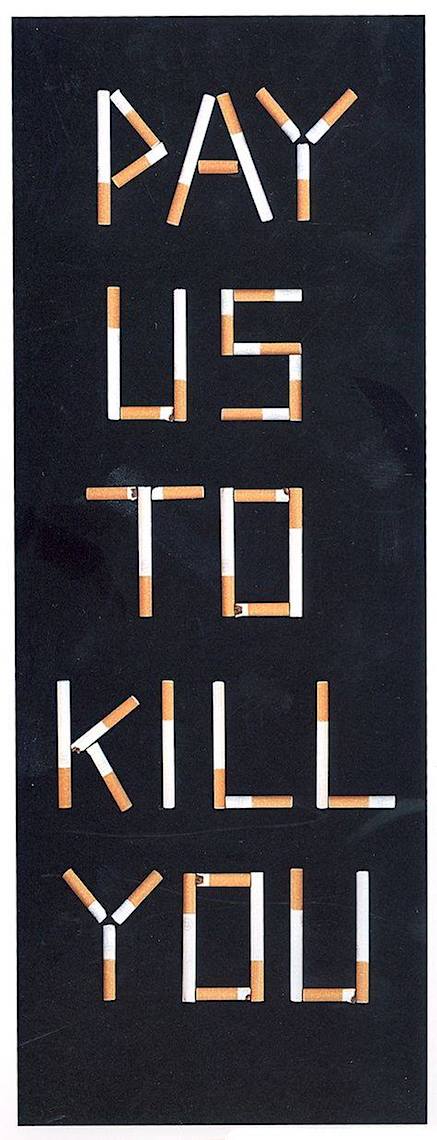
Thanks to David Peters (and his friend David Asari)… “Dan Covert is the designer of the anti-smoking poster. He did this when he was a student at California College of the Arts for his Graphic Design 1 course taught by Mark Fox. Impressive work for a GD1 student.”


